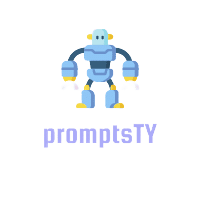Succession planning can feel like trying to solve a jigsaw puzzle with missing pieces. It’s tough knowing how to prepare for future leadership and ensure your organization remains strong. Many leaders struggle with finding the right talent and creating a solid plan for the future.
But don’t worry! If you stick around, you’ll discover some essential ChatGPT prompts that can help streamline your succession planning process. These prompts can guide you in identifying potential leaders and crafting a solid plan that fits your organization’s needs.
Get ready to dive into tips on finding future leaders, crafting your plan, and overcoming common challenges—all while leveraging the power of ChatGPT to make your job easier. Let’s get started!
Key Takeaways
- Succession planning is critical for organizational stability and requires strategic preparation.
- Use targeted ChatGPT prompts to identify leadership skills, create plans, and engage employees.
- Look for high-potential employees who display leadership traits like problem-solving and communication.
- Follow key steps like defining goals, identifying key roles, and developing successor training plans.
- Address common challenges like employee engagement and training to improve succession effectiveness.
- Utilize mentorship programs to enhance leadership skills and provide guidance.
- Regularly evaluate your succession plan to ensure its effectiveness and adapt to changing needs.

Essential ChatGPT Prompts for Effective Succession Planning
Succession planning is critical for maintaining stability and progress in any organization.
To leverage ChatGPT in this process, here are some essential prompts you can use:
“Generate a list of key skills required for future leaders in our organization.”“Outline effective strategies for developing a robust succession plan tailored to our company's needs.”“Suggest methods to engage current employees in the succession planning process.”“Create an action plan for assessing leadership potential among our employees.”“What are innovative approaches to talent identification for leadership roles?”
These prompts will help you gain insights and develop a solid framework for your succession planning strategies.
How to Identify Future Leaders in Your Organization
Identifying future leaders in your organization is vital for a healthy succession pipeline.
Start by looking for high-potential employees (HIPOs) who demonstrate leadership qualities such as problem-solving, decisiveness, and effective communication.
Some strategies to help you recognize these potential leaders include:
“List the top traits that indicate strong leadership potential in employees.”“Create a framework for assessing leadership capabilities among team members.”“Suggest evaluation methods for understanding employees' readiness for leadership roles.”“Identify coaching techniques to nurture leadership qualities in aspiring leaders.”
By incorporating these approaches, you’ll be better equipped to identify the right candidates for future leadership roles.
Crafting a Succession Plan: Key Steps to Follow
Crafting a succession plan requires strategic thinking and careful evaluation.
Here are the key steps to follow for an effective succession plan:
“Define your organization's long-term goals and how leadership fits into these goals.”“Identify key roles that need successors and prioritize them based on impact.”“Develop criteria for evaluating potential successors and their readiness.”“Create development plans for identified successors with specific training and mentoring opportunities.”“Regularly review and adjust the plan to align with changing organizational needs.”
Following these steps can lead you to a well-structured succession plan that can adapt over time.
Developing Skills for Succession Planning with ChatGPT
Developing skills for succession planning is crucial to ensuring your future leaders are prepared.
ChatGPT can be an invaluable tool in this arena for enhancing skills. Here’s how:
“Provide a list of training programs that focus on leadership skills development.”“Suggest activities to improve essential team management skills among employees.”“Create a mentoring framework that pairs aspiring leaders with established ones.”“What resources or materials can assist in developing emotional intelligence in potential leaders?”
By utilizing these prompts, you can effectively engage your employees in leadership training programs that will cultivate their skills.

Common Challenges in Succession Planning and How to Address Them
Succession planning can be tricky, and organizations often face several challenges.
Some common hurdles include a lack of engagement, unclear expectations, and inadequate training for successors.
Addressing these issues is crucial for a successful succession plan.
Here are some effective prompts to tackle these common challenges:
“List strategies to improve employee engagement in the succession planning process.”“Outline best practices for setting clear expectations for successors.”“Suggest ways to ensure ongoing training and development for identified successors.”“Identify potential roadblocks in the succession planning process and provide solutions.”“How can we foster a culture that supports open discussions about career development?”
By leveraging these prompts, you can navigate the complexities of succession planning more effectively.
Using ChatGPT to Analyze Leadership Styles and Fit
Understanding the leadership styles within your organization is vital for effective succession planning.
Using ChatGPT, you can gain insights into the compatibility between current leaders and potential successors.
Here are some prompts you can use for analyzing leadership styles:
“Generate a list of common leadership styles and their characteristics.”“Assess the compatibility between these leadership styles and our current organizational culture.”“What are the key indicators of a successful leadership transition?”“Create a framework for evaluating leadership styles among our potential successors.”“Suggest methods to align leadership styles with organizational goals.”
These insights can help you match successors to roles that fit their leadership style, enhancing the likelihood of a smooth transition.
Creating Mentorship Programs: Prompts for Structure and Guidance
Mentorship programs are a great way to develop skills in future leaders while offering guidance from experienced professionals.
Creating a structured mentorship program requires thoughtful planning and clear objectives.
Here are actionable prompts to help design your mentorship initiative:
“Outline key components of an effective mentorship program.”“Suggest ways to match mentors with mentees based on career goals and skills.”“What activities can mentors engage in to promote leadership development?”“Create guidelines for evaluating the effectiveness of mentorship programs.”“Identify resources for mentors to guide their mentees effectively.”
Using these prompts can lead to a well-designed mentorship program that nurtures the next generation of leaders within your organization.
Evaluating Success: Measuring the Impact of Your Succession Plan
Measuring the impact of your succession plan is essential to ensure it’s working effectively.
You want to know if your efforts are translating into successful leadership transitions.
Here are some prompts to help you evaluate the success of your succession planning:
“Suggest metrics for assessing the effectiveness of our succession plan.”“Outline a framework for collecting and analyzing feedback from successors and their mentors.”“What indicators signal a successful leadership transition in our organization?”“Create a report template for evaluating the outcomes of our succession strategy.”“Identify case studies or examples of successful succession planning for reference.”
Employing these evaluation tactics will help ensure your succession plan evolves and remains effective over time.

FAQs About Succession Planning Prompts for ChatGPT
Succession planning can raise many questions, especially when leveraging tools like ChatGPT.
Here are some frequently asked questions related to succession planning prompts for ChatGPT:
What types of prompts can I use for succession planning with ChatGPT?
You can create prompts that address various aspects of succession planning such as talent assessment, leadership skills development, and mentorship strategies.
For instance, use these prompts:
“What are the best practices for creating a transparent succession planning process?”“List the key metrics to evaluate succession planning success in our company.”“Outline steps to engage senior management in the succession planning process.”
How can ChatGPT assist in overcoming succession planning challenges?
ChatGPT can provide actionable insights and solutions to common challenges in succession planning.
Try using prompts like:
“Identify solutions for improving engagement in succession planning initiatives.”“What strategies can we implement to address skill gaps among potential successors?”“How can we create a culture that supports continuous leadership development?”
Can ChatGPT help tailor prompts to our specific organizational needs?
Absolutely! You can customize prompts to reflect the unique aspects of your organization.
Here are some examples:
“Generate a succession planning framework based on our company's mission and values.”“How can we incorporate diversity and inclusion into our succession planning process?”“Provide strategies for aligning succession planning with our organizational structure.”
What are the benefits of using ChatGPT in succession planning?
Using ChatGPT can streamline the succession planning process, making it more efficient and data-driven.
Focus on prompts like:
“List the advantages of using AI in succession planning initiatives.”“How can ChatGPT improve communication in our succession planning process?”“Suggest ways to leverage ChatGPT insights for long-term leadership development.”
By utilizing these FAQs and prompts, you can effectively engage with ChatGPT to enhance your succession planning strategies and address your organization’s unique needs.
FAQs
A successful succession plan includes identifying key roles, assessing potential leaders, providing training and development, creating mentorship opportunities, and establishing measurable objectives to evaluate progress and impact.
ChatGPT can help generate prompts for identifying leadership qualities, analyzing leadership styles, outlining mentorship programs, and creating frameworks for assessing future leaders effectively and efficiently.
Common challenges include resistance to change, identifying the right successors, lack of clear communication, and ensuring alignment with organizational goals. Addressing these can enhance the effectiveness of your succession planning efforts.
Success can be measured through metrics like leadership retention rates, employee satisfaction, performance evaluations of successors, and the alignment of succession outcomes with strategic organizational goals.
